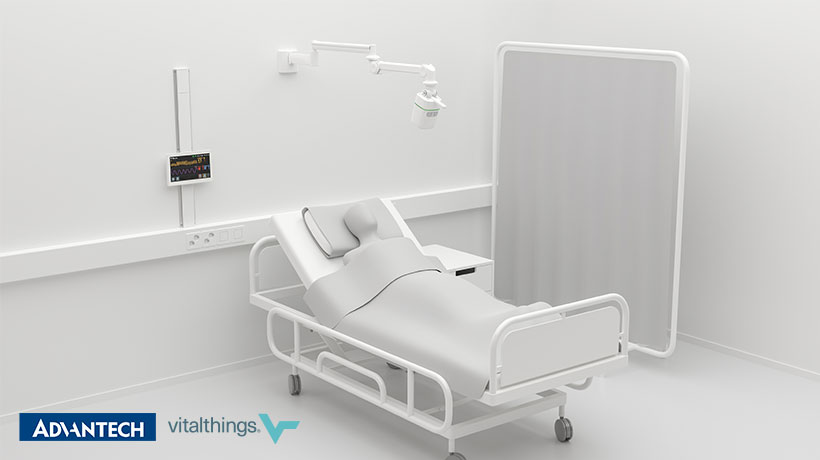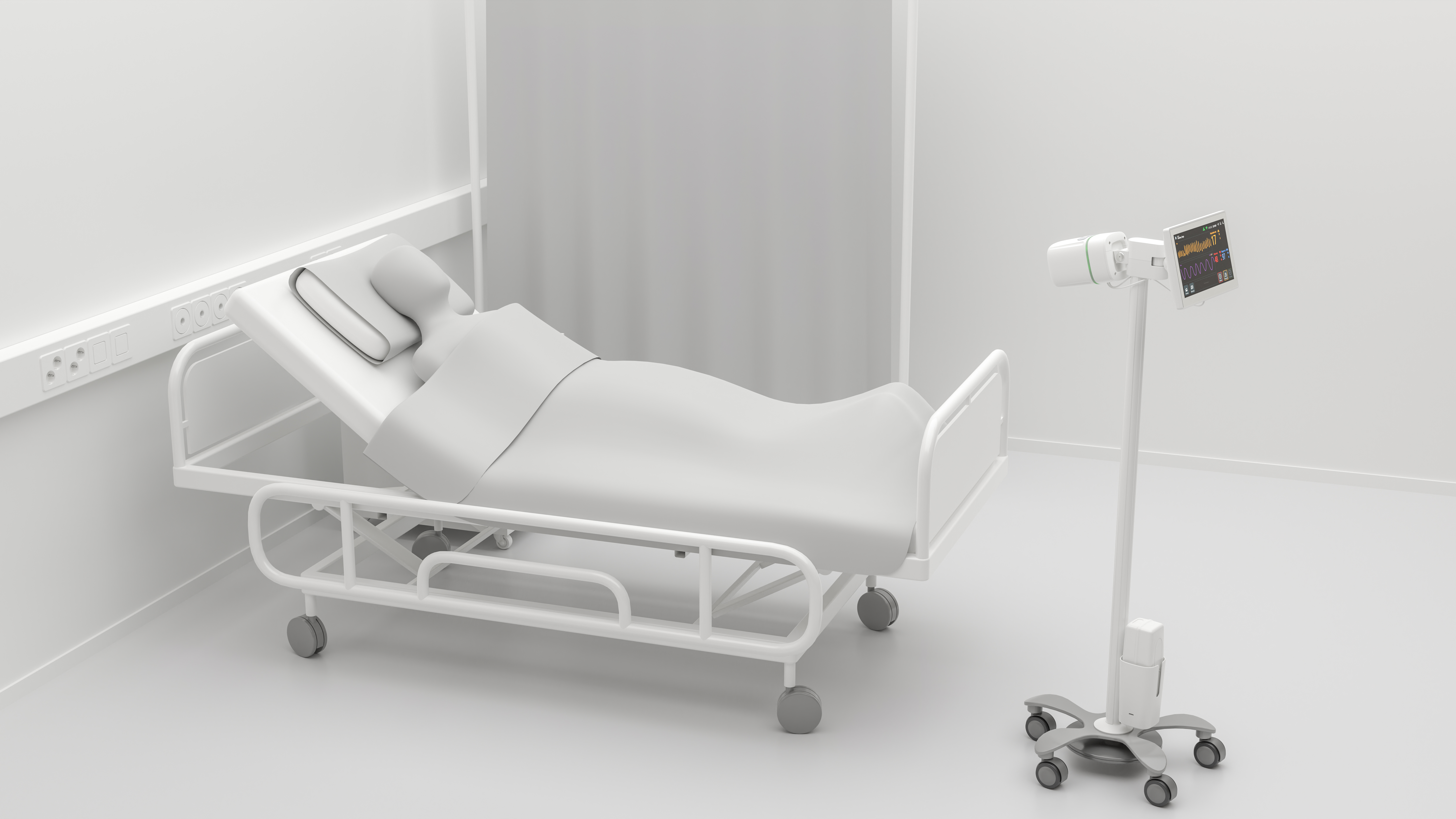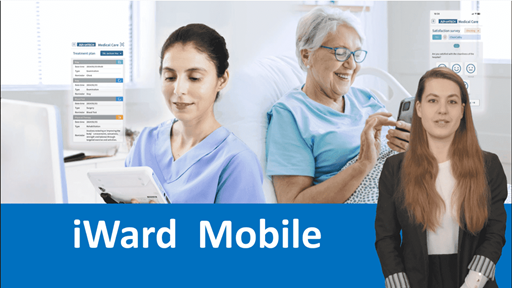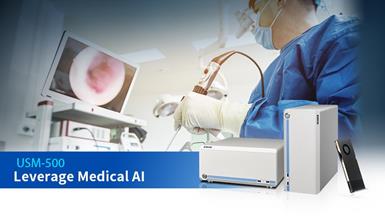
Photo Provided by VitalThings Interview with Trond Hakon Trondsen, Business Developer of VitalThings
Introduction
Continuous monitoring of vital signs of patients at a large scale poses challenges when using traditional methods. Patients are typically tethered to bedside devices with wires, which limits their mobility and exacerbates discomfort. Additionally, the process of attaching and removing sensors from patients is time-consuming. Meanwhile, intermittent monitoring makes it difficult for healthcare professionals to promptly identify any deterioration in a patient’s condition. To address these challenges, St. Olavs University Hospital forged an innovative partnership with VitalThings and DNV Imatis. The objective of this collaboration was to develop a continuous, contactless medical monitoring solution capable of real-time visualization of vital signs and triggering alarms when necessary.
VitalThings collaborated with Advantech to integrate the HIT-512 Medical-Grade Information Terminal with their radar and sensor technology, resulting in the creation of VitalThings Guardian for Project Autoscore. This innovative solution provides a continuous and contactless monitoring system capable of accurately measuring vital signs such as respiration, pulse, SpO2, and presence. By utilizing this technology, healthcare professionals are empowered to deliver proactive care and interventions, ultimately leading to enhanced patient outcomes.
Challenges
HIT-512 Medical-Grade Information Terminal helps speed up the certification process
The initial challenge in this project involved the development of a contactless medical monitoring system that could meet the requirements for EU MDR (European Medical Device Regulation) certification. To mitigate regulatory risks and prevent common errors, the team sought assistance from experienced consultants. This decision facilitated effective communication with relevant regulatory bodies in a streamlined and timely manner. Additionally, Advantech played a crucial role by providing the required information for medical certification. The fact that HIT-512 had already obtained pre-certification for medical applications expedited the regulatory process for EU MDR certification. The second challenge in this case centered on the need for a display to visualize data and trigger alarms. Advantech stepped in and successfully addressed this requirement by modifying the appearance of the HIT-512 through the design of a customized molding tool. Their competitive pricing, seamless cooperation, and esteemed global reputation played a vital role in enabling VitalThings to overcome challenges, make necessary adjustments, and establish a successful partnership.
Contactless vital sign monitoring improves healthcare
St. Olav’s University Hospital recognized the extensive potential of contactless vital sign monitoring across various applications. Initially, their intention was to implement the VitalThings Guardian M10 system in the emergency room, enabling contactless, continuous, and automatic measurements. Since emergency room occupancy can change a lot throughout an average day, optimizing staffing can be challenging. By utilizing a system that doesn’t require sensors to be attached to patients’ bodies and can operate autonomously without nurse intervention, a higher level of monitoring can be achieved, even during demanding periods. Additionally, patients no longer need to be concerned about mobility restriction caused by cords. More importantly, the collection of patient physiological data becomes more accurate and reliable.
The VitalThings Guardian M10 system offers significant advantages in respiratory monitoring. Traditionally, the standard of care involves observing a patient’s chest movements to assess their respiratory status. However, manually counting is prone to inaccuracies and is a time-consuming process. Human errors can further compromise the reliability of these measurements. Mr. Trond Hakon Trondsen, Business Developer of VitalThings, pointed out that respiratory depression is a common side effect of opioid medication and often the first vital parameter to be affected after receiving medication. By utilizing VitalThings Guardian M10, potentially life-threatening situations can be avoided, and medication can be adjusted promptly based on a patient’s vital parameters.
Improved patient safety, enhanced work conditions for nurses, and reduced healthcare costs
One application of the solution involves postoperative and orthopedic patients, where hospitals currently rely on intermittent checks of vital signs. With the implementation of this solution, nurses are now able to assess the condition of each patient and receive early warnings of any health deterioration without the need to physically enter the patient’s room. This leads to improved patient safety and work conditions for nurses while also avoiding having to wake patients during the night. Furthermore, the solution proves especially beneficial for patients who may be sensitive to the presence of numerous cables, including psychiatric patients, children, and those suffering from dementia.
The VitalThings solution has already been implemented in St. Olav's hospital, which has a 20% share of the Norwegian market. The solution has garnered significant interest from physicians and other hospitals not just in Norway, but also in the UK, Australia, and Italy. The underlying technology of the VitalThings Guardian M10 system is also employed in elderly homes with Somnofy—another VitalThings product. This versatility makes it suitable for a range of welfare applications, including remote monitoring, home hospitalization, and psychiatric care.
Continuous monitoring brings significant benefits to patients, as supported by various studies. It has been found to contribute to a reduced risk of mortality, decreased necessity for transfers to intensive care units, fewer calls to emergency response teams, and shorter hospital stays. The inclusion of contactless features is also important in enabling automatic startup, saving valuable time and ensuring consistency. Additionally, contactless monitoring eliminates the need for disposable items and reduces the requirement for equipment disinfection. Moreover, contactless features facilitate uninterrupted monitoring over prolonged periods. The VitalThings monitoring solution offers a simple way for hospitals to upgrade from intermittent vital sign checks to the continuous monitoring of patients. This further improves patient outcomes, improves the working conditions for nurses, and reduces healthcare costs.


" Advantech’s competitive pricing, smooth cooperation, and global reputation ensured that VitalThings was able to resolve issues and make necessary adjustments." - Hakon Trondsen, Business Developer of VitalThings
Features
- Incorporates USB Type-C power delivery for external devices.
- Complies with European Medical Devices Regulation (MDR) requirements.
- Waterproof design for infection control.
- Easy, lightweight carry-on size with diverse I/O to deliver hardware/ software flexibility and customization as well as mobile applications.
- Guarantees product longevity and long-term software support.
- Over-the-air firmware upgrade and fleet management.
Case Study Benefits
- Helps identify health deterioration at an early stage.
- Visualizes vital sign data and triggers alarms.
- Enables proactive care and early intervention.

For more information regarding HIT-5 series or other Advantech Digital Healthcare solutions, contact your local sales representative or visit our website.




-25/HIT-512_82046020200727110620.jpg)
